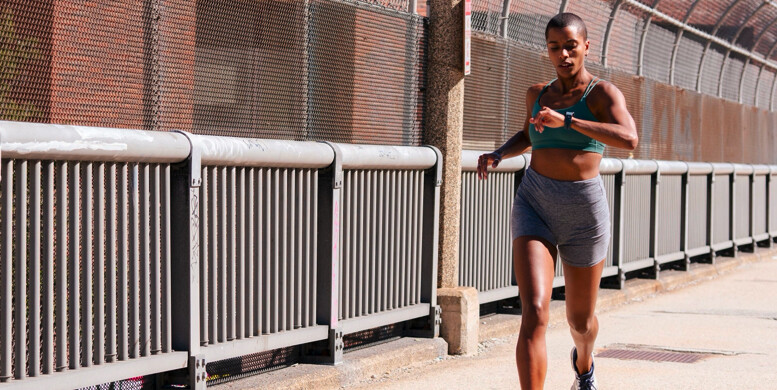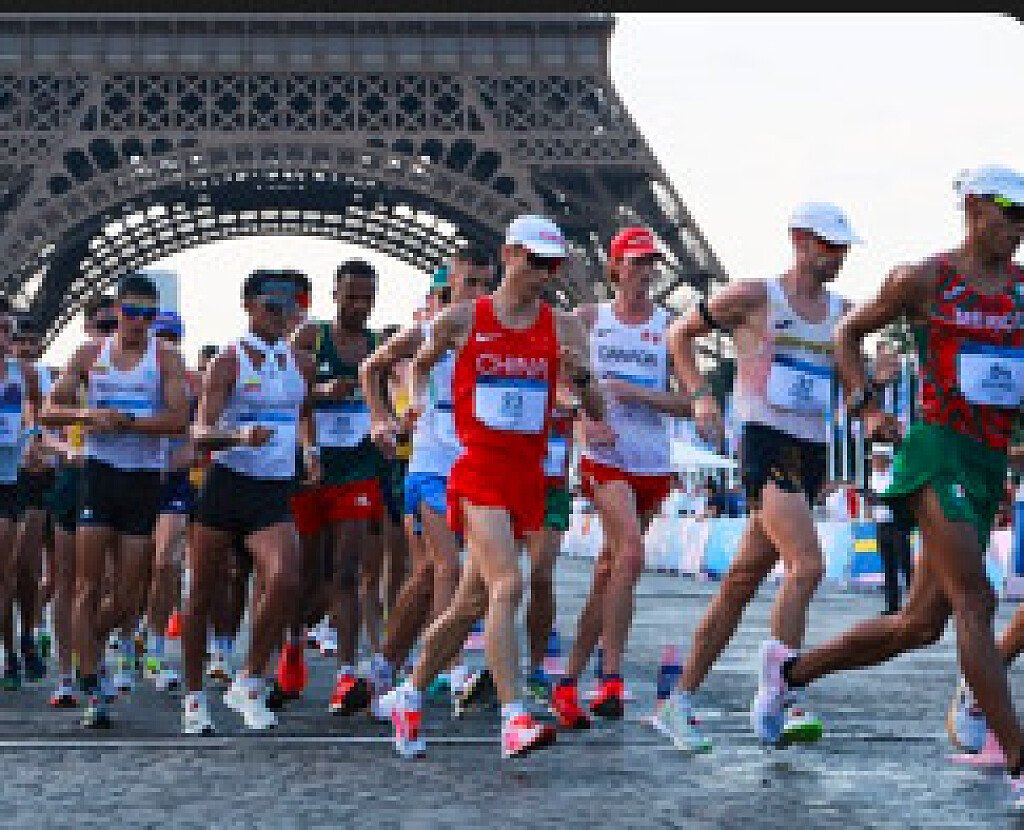Running News Daily
Running News Daily is edited by Bob Anderson in Los Altos California USA and team in Thika Kenya, La Piedad Mexico, Bend Oregon, Chandler Arizona and Monforte da Beira Portugal. Send your news items to bob@mybestruns.com Advertising opportunities available. Train the Kenyan Way at KATA Kenya. (Kenyan Athletics Training Academy) in Thika Kenya. KATA Portugal at Anderson Manor Retreat in central portugal. Learn more about Bob Anderson, MBR publisher and KATA director/owner, take a look at A Long Run the movie covering Bob's 50 race challenge.
Index to Daily Posts · Sign Up For Updates · Run The World Feed
Training for a Marathon? Why Time on Feet Is a Key Metric
According to coaches, focusing on time has key benefits for both new and experienced runners.
Rather than hold yourself to a specific number of miles when you go out for a run, what if you focused more on the time on your watch? You do the work, keep an eye on the clock, and when your time is up, that’s it. You’re done.
This training method is known as “time on feet” and it is both simple and effective. Time on feet measures how much time you spend running, walking, and cross-training rather than the distance you cover. For example, when you wake up on a Sunday morning instead of setting a distance goal, you might run for 75 minutes. Shorter midweek runs may clock in between 30 and 45 minutes.

How far you go will depend on your pace, and other elements that affect runs, like weather, terrain, and how you feel that particular day. It’s the time on feet that matters, though, not the other metrics, such as distance and pace.
To learn more about when to include time on feet in your training plan, we spoke with three different running coaches. Here’s what they had to say about counting minutes instead of miles.
The Benefits of Following Time on Feet as a Metric
Whether you’re a new runner or a runner with loads of miles in your shoes, using time on feet can improve your runs.
It Helps Distance and Pace Progression
“I coach almost exclusively in time instead of mileage,” Will Baldwin, USATF and VDOT-certified running coach tells Runner’s World. Baldwin explains that when researchers look at how running affects your body, they do so in time increments, not mileage.
“We know, on average, it takes 30 to 35 minutes of time on feet to get a measurable aerobic benefit from a run,” Baldwin says. For one runner, 35 minutes may equate to five miles. For another, it may mean three miles.
Runs of at least 30 minutes provide enough stimulus for predictable aerobic adaptations, such as increased mitochondrial density, enhanced capillary growth, and improved fat metabolism, says Baldwin. Importantly, this duration allows the body to begin utilizing fat as a fuel source, which is a crucial aspect of endurance training. “A minimum of 30 minutes helps to ensure meaningful and measurable improvements in aerobic fitness,” Baldwin adds.
“If you’re brand new to the sport, adding five to 10 minutes of running in lieu of adding miles can make things a bit more manageable,” Matt Forsman, USATF/RRCA-certified running coach and race organizer at Sasquatch Racing tells Runner’s World.
Beginners and new runners will eventually see their distance increase during their typical run time. “As fitness goes up, even though it’s the same amount of time, you might actually run quite a bit farther because you’re able to move faster,” Forsman says. “It can be motivating seeing how much farther you’re getting in the same amount of time.”
If you’re training for a race, it helps to combine both time on feet and mileage. For example, the Galloway run/walk plans include both time on feet (during the week) and distance (for weekend long runs). This helps runners get familiar with what a specific distance feels like.
It’s Key for Specific Types of Races
While time on feet is a helpful metric for new runners, it’s also helpful for those going for super long distances.
“[Time on feet] is useful when running ultramarathons, as not all miles are created equal when tackling distances beyond 26.2 miles,” Forsman says. “If you’re training for ultras, it’s likely you’re doing it on the trails, which means uneven terrain, hills, and variable pacing throughout the course of your runs. So, a time-on-feet approach versus a strict mileage-based approach makes sense.”
Similarly, if you’re training to run a multi-day race, it helps to plan back-to-back runs that align with your event, no matter the distance. “You definitely want to have that experience of time on feet day after day as part of your training block,” says Chris Twiggs, chief training officer of Galloway Training Programs, an Atlanta-based coaching company, and a marathoner and ultrarunner. “You want to try to simulate what you’re going to go through in a multi-day event.”
One thing to keep in mind: If you’re training for a long endurance event, Twiggs warns that once you creep over the six-hour mark during a training run, “you’re going to see diminishing returns” and “you’re going to have a hard time recovering from that.”
It Offers a Psychological Boost
Most long-distance training plans, including those for a marathon or half marathon, don’t have you running the full distance of the race in one go. However, logging comparable time on your feet prerace can boost your confidence before an event, even if you don’t run that distance at race pace.
Twiggs says that just walking for your predicted race time establishes a sense of capability while offering real training benefits.
“Doing a five-hour walk, for example, will not give you the same pounding that you would get from a 26-mile run,” Twiggs says. “But if you are out there for the same amount of time that you’re going to be, and if you do it at the same time of day that the event’s going to take place and over the same sort of terrain, then you’re getting those adaptations as well.”
Plus, it helps you mentally prepare for the length of time you’ll be out there moving your body, potentially helping you develop the mental stamina required for running long distances.
How to Calculate Time on Feet in a Training Plan
There’s no clear-cut formula to determine how much time you need on your feet because it depends on a handful of factors, including event type and distance, typical pace, current levels of experience and fitness, and your schedule.
“For something like a 5K, you’ll likely want to gradually get to a point where you can handle [about] 40 minutes of continuous running,” Forsman says. “This time frame roughly aligns with the amount of time it takes most new runners to complete the 5K distance.”
Of course, your race time will vary depending on your pace. So, even if you prefer to use time-on-feet training, knowing your average mile time is helpful, as it determines how long it will take you to finish a specific distance.
Also, there is more that goes into race training than only time on feet—especially if you have a goal time in mind. “If you’re training for a road half marathon and want to run two hours, it’s a bit trickier,” Forsman says. Building up to two hours of time on feet is really just step one. You also need quality work, like tempo runs and intervals, which involve targeted pace work. This is what will help you develop the ability to hold a 9:09-per-mile pace to reach your two-hour half-marathon goal. “So, strictly using a time-based approach for this kind of goal might not be the best idea,” he adds.
Mixing in distance-based runs can also provide assurance that your training is on track. Baldwin almost always gives marathoners a 20-mile run during their training. “For whatever reason, that’s a huge mental barrier for a lot of folks. It makes them feel very confident that they’ve run 20 miles going into a marathon,” he explains.
Likewise, during marathon training, tapering with time on feet—cutting back on running volume and intensity in the days or weeks leading up to an event—follows the same general principles, whether you’re using time or distance as a metric. For example, in the final three weeks of training, marathoners typically reduce their weekly mileage by 20 to 30 percent each week. If you’re using time on feet, you simply trim your minutes by the same percentage.
Other Factors That Play Into Time on Feet
When it comes to accounting for daily activity, don’t overthink it. The coaches recommend focusing on intentional workouts when tallying time on feet, so you don’t need to factor in a leisurely walk or your daily steps. Though you do want to keep in mind that if you’re limiting time on feet during a taper or the days before a race, walking will add up.
As for cross-training, like cycling or the elliptical, unless you’re working with a coach or training platform that can accurately calculate the difference in training modalities, just use the same time you would if you were running. So, if you’ve got a 35-minute run on the calendar but need to jump on the elliptical, do a 35-minute workout. “It’s not going to be perfect. We’re not going to get the same amount of fitness,” Baldwin says. “But at least we’re keeping our schedule and our rhythm.”
(08/04/2024) Views: 392 ⚡AMPby Runner’s World




